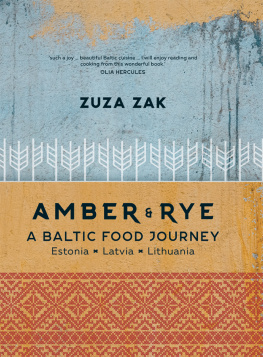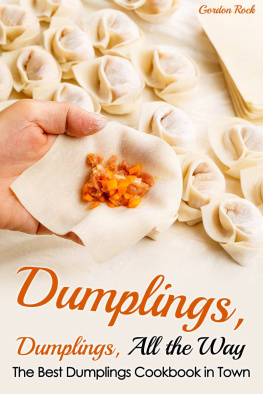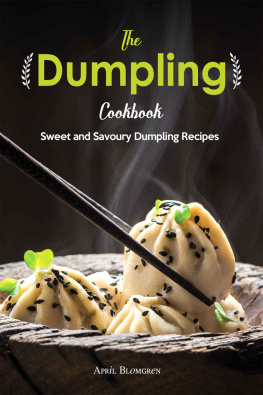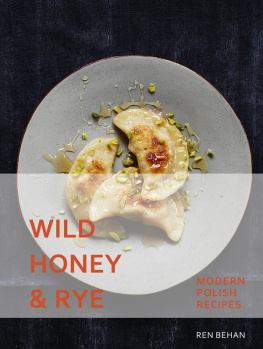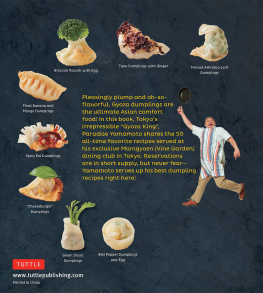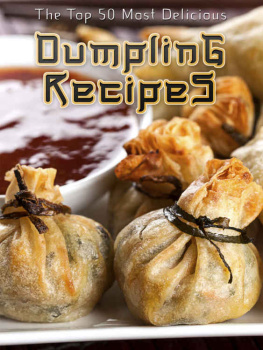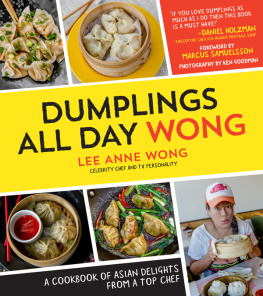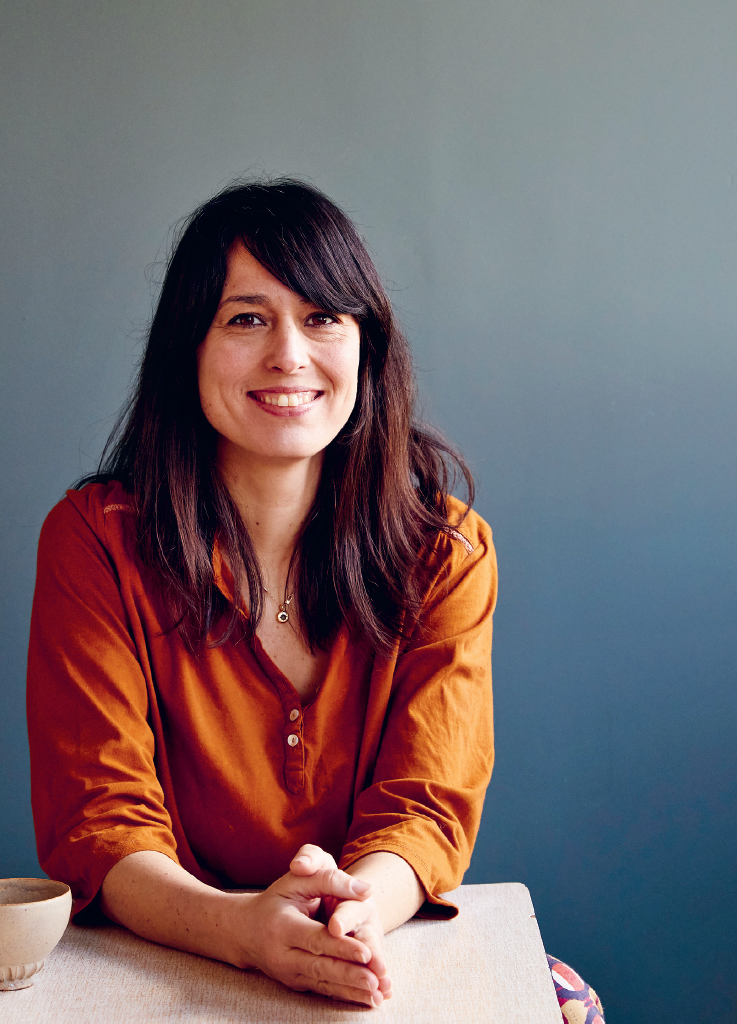
Acknowledgements
Pierogi is the gorgeous book it is (even if I say so myself) because of the wonderful team behind it. Thank you to the whole team at Quadrille, especially Sarah Lavelle, Stacey Cleworth and Claire Rochford. Also, a big thanks to my copy-editor, Susan Low, for your considerate editing that allowed my voice to shine through.
Creating the photographs is one of my favourite parts of the whole process, because I get to work with my dream team photographer Ola O. Smit and stylists Anna Wilkins and Sam Dixon. Thank you for making the whole process feel like a dumpling spa break, while creating such beautiful work! Thank you also to Matthew Hague and my friend, Alissa Timoshkina for being part of the team.
Gratitude and thanks for the stunning cover illustration, Rhi Moxon.
None of my books would get published without my wonderful agent and friend Isabel Atherton at Creative Authors thank you for always believing in me!
A massive thank you to Olga Koutseridi (@ogi_the_yogi) for offering to test the recipes. While I usually do everything myself, I really needed some help this time, as I was finishing Pierogi while doing childcare on my own. Youre an angel; Im so grateful for your thoughtful and thorough work on this project!
As the pandemic put an end to my plans of travelling around Poland, the internet proved to be an invaluable research tool. Thank you to my whole Instagram community for your help and support, with a special mention to everyone who contributed, procured or simply inspired recipes for this book: Antonina (Tosia) Parris-Yarbrough and her aunt Nina Drej; Teresa Bagiska; my friend Magdalena Lawniczak and her babcia Janina, as well as my friend and photographer Ola O. Smit and her babcia Janina; Andreas Haynes; my Swiss friend Viviane Moermann; Ewa Sobiecka; Joanna Ptasia (@ptasia_cosniecos); Angela Gorash. And thanks to Piotr Draba, who gifted me his beautiful book.
While we are on the subject of research a huge thank you to Pani Aleksandra from Muzeum Lwowa i Kresw (just outside of Warsaw) for giving me access to her amazing library of old cookbooks and handwritten recipes. Thank you to the School of Slavonic and East European Studies (where Im doing my PhD) for their amazing library and to Katarzyna Zechenter and Anne White, my brilliant supervisors, who always push and inspire me with their knowledge.
Family support is a starting point for everything I do and its easy to forget to be grateful on a daily basis, so Ill take this opportunity to say a massive thank you to my mum, Teresa, for helping me with the research and testing, as always. A big thanks also to my dad, Kajetan, my partner, Yasin, and my in-laws, Patricia and Ovi, for their continued support in my career, and my brother, Rob, with his girlfriend, Josie, for always being on hand to help out.
It really does take a village!
Life has a funny way of coming full circle. The big irony of my writing this book is that I set off on my food-writing career to prove that Polish food was more than just dumplings, a comment that was levelled at me at a wedding long ago that was the straw that broke the camels back, so to speak. I felt as though I had been defending Polish food in the UK for much of my life, and I wanted to show the world that there was more to Polish food than they imagined.
Attitudes to Polish (and Eastern European) food have since changed globally, so there is nothing left to prove, only to enjoy and explore. So here I am, over the moon to be writing an entire book about the world of Polish dumplings.
Pierogi are the dumplings that everyone identifies with Poland, hence the title of this book. While pierogi are king, I wanted to use their popularity to highlight other, lesser-known dumplings, and the regions that they come from. In Poland, there is a whole universe of regional cuisines, much of which remains undiscovered to the world at large, and much of which is in danger of being lost along with the older generations. My aim is to preserve those old traditions, but also to bring things up to date and to make Polish dumplings accessible and enjoyable for all generations.
Loved by everyone, pierogi started out as peasant food. Its worth delving into these roots, because theres a pride to peasantry in Poland. The word for peasant in Polish is chop (man) or chopka (woman), and there are no derogatory nuances to it (as perhaps there are in English). The culture of the Polish peasants is folklore, after all, in its kaleidoscope of guises, from wycinanki paper art to pajaki rye straw chandeliers and the kind of music that you feel in your heart and that makes you want to cry and laugh at the same time. Surely there is no Pole on earth that would not feel at least a small pang of pride in that.
There were times in history when the upper classes celebrated peasantry, and many noblemen married peasant woman and moved to the countryside to live a life that they felt would be closer to the earth. This fascination with peasantry was manifested in the book (and later film) Chopi (The Peasants) by Nobel prize-winner Wadysaw Reymont.
This book explores regional and modern versions of Polish dumplings from the four corners of Poland (and the middle), and all around the globe. It delves into the past, through ancient recipes and transforms, and envisages, the future of pierogi.
Of course, its not going to be just dumplings, because, for me, food is always a gateway to another world.
I welcome you into my pierogi wonderland.
Ingredients
Flour I dont want you to be put off making dumplings because you dont have the right kind of flour. I use plain (all-purpose) flour throughout this book, but I do also love to use pasta (00) flour for the extra delicacy and fluffiness it gives, which I feel elevates most dumplings (drop dumplings are an exception to the rule). Dumplings are by their very nature rustic, so make them with any white flour you have to hand, and try to use the best-quality you can.
Sugar Personally, I always use golden caster (superfine) sugar, but for practicality I have listed ordinary caster sugar in ingredients lists, as it is easily obtainable and probably more authentic anyway. Feel free to use whichever you prefer.
Potatoes You want floury ones, if possible, and there is a theory that older potatoes work better than younger ones. I often use Kelly, Cara or Irga varieties. There are often differences, even within the varieties themselves, and this is something you will learn in time. You definitely dont want to use waxy potatoes. All-rounders have always worked for me, but which varieties qualify as all-rounders differs from country to country. It takes a bit of experience to stay nonplussed by it all, but dont worry; I give pointers for the individual recipes throughout the book.
Working with starch In general, if youre a novice, then err on the side of caution and initially remove as much water from the potatoes as you can by squeezing them through a fine sieve or muslin (cheesecloth), but always reserve the starch. If the potato dough doesnt want to stick once youve made it, then just add the starch into the mixture when making the dough, as this will make it stickier without the need to resort to too much flour (which can make your dumplings too heavy).
That said, as you gain experience, you may want the dumplings to be a little wetter and decide not to squeeze quite so much moisture from them. For this approach, its equally important to keep the starch that settles at the bottom of the water when you squeeze the potatoes through a fine sieve or muslin (cheesecloth). If the potato dough doesnt want to stick once youve made it, use the starch first before adding more flour.
Next page

